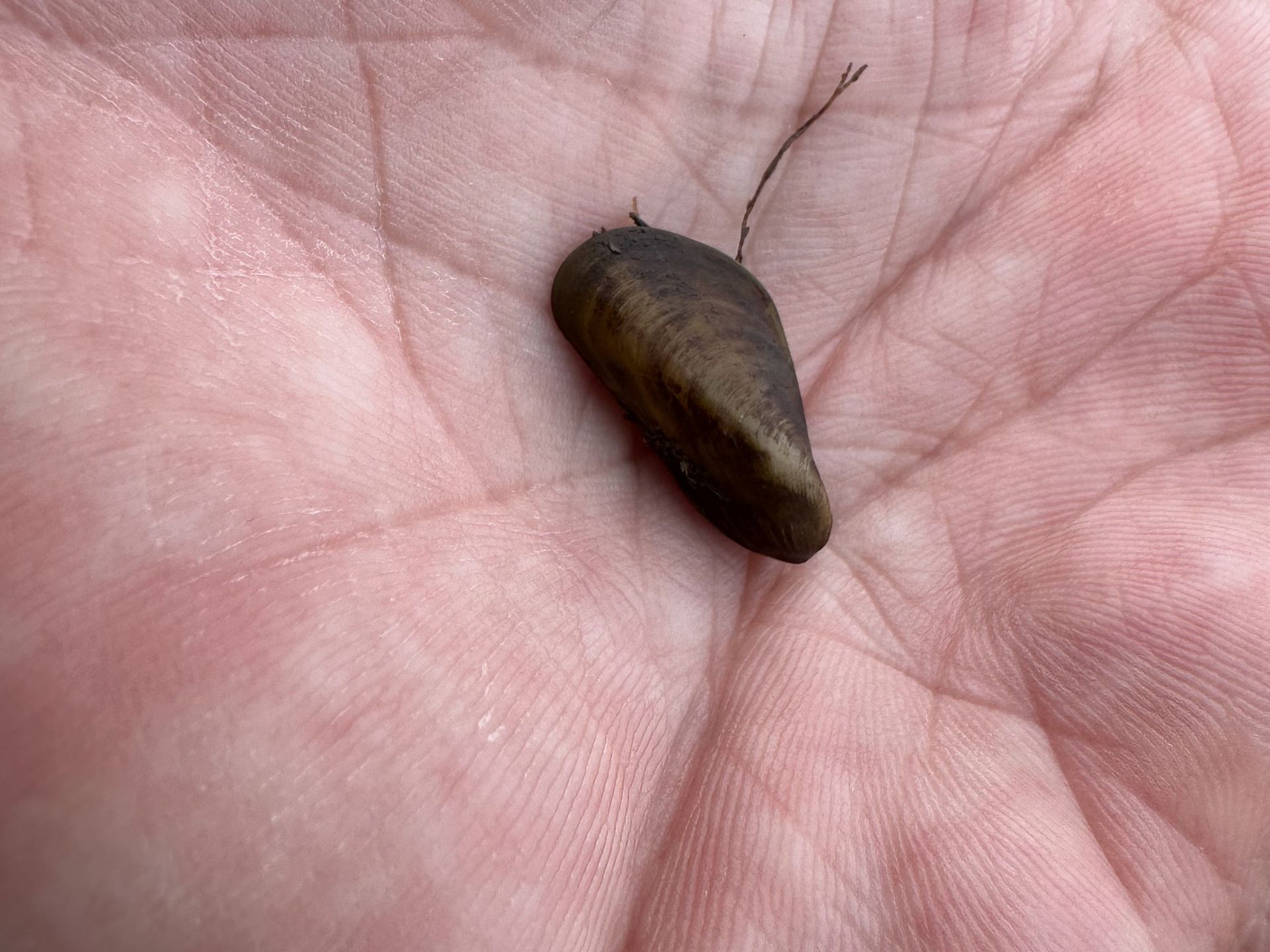Monumental Questions - What are Golden Mussels?

You may have heard of Golden Mussels on the news or maybe at your local marina. They are a highly invasive and opportunistic bivalve species that has only recently been documented in North America. Native to China, Thailand, Korea, Laos, Vietnam, Indonesia and Cambodia, Golden Mussels (Limnoperna fortunei) have been documented in Hong Kong, Japan, Taiwan, Argentina, Brazil, Bolivia, Paraguay, Uruguay, and the United States. In fact, as of October 2024, their occurrence in the Sacramento - San Joaquin Delta and O’Neill Forebay in Merced County were the first known discoveries in North America. Golden Mussels are extremely opportunistic and can colonize fresh and brackish waters in bays, creeks, canals, lakes, rivers and other wetland areas with temperatures ranging from 41-95 degrees Fahrenheit. Golden Mussels are tolerant of pollution and can establish and reproduce in waterbodies with much lower calcium than Quagga and Zebra Mussels, making many more waterbodies in the state vulnerable to infestation. The Golden Mussels have extremely high reproduction rates and can reproduce during their first year of growth; each adult mussel can produce tens of thousands of free-floating veligers (larva) that will mature in the water column while flowing downstream until they are ready to settle. Due to their broad environmental tolerance, high reproductive rate, and free-floating life stage that allows for rapid dispersal, this alien species has become a threat to native fisheries and ecosystems.
Golden Mussels range in color from light to dark golden to dark brown and can reach nearly two inches long and can live for two years. Adults form byssal threads, also known as mussel beards, which anchor them securely to natural and man-made substrates in varying depths of water. These threads are strong enough to withstand abrasive wave action and high flows. Golden mussels have been found attached to hard surfaces such as the submerged logs, rocks, hulls of boats, buoys, and other equipment as well as soft substrates and aquatic plants.
The most common way invasive mussels such as Golden Mussels are transported between bodies of water is by hitchhiking on watercraft and other equipment. Invasive species such as Golden Mussels, can be introduced into formally unoccupied areas through ballast water of ocean-going ships, adults can be relocated by being attached to watercraft being moved from one body to water to another or nearly microscopic veligers can be moved by being in contained water within watercraft or other equipment. In areas where waterways are interconnected, Golden Mussel adults and veligers can move with the flow of water or watercraft going from one body of water to another. It is also possible that they move upstream in the stomach of fish – being undigestible by native fish and eventually passing through the fish.
Golden Mussels are ultra-efficient filter feeders. When dense colonies of these organisms form, they consume substantial quantities of microscopic plants and animals that native fish, game fish and other aquatic species depend on to complete their life cycle and flourish. Additionally, Golden Mussels have been demonstrated to cause shifts in algal communities that favor species that produce Harmful Algae Blooms (HABs), resulting in more adverse impacts to the environment. The dense congregations of mussels not only restrains water movement by biofouling (obstructing) pipes, pumps, hydropower and irrigation facilities as well as damaging watercraft motors. Removal is continuous and costly to maintain operational function which results in economic impacts to the community.
Community impacts as a result of Golden Mussels infestations include constraints on recreational waterbody usage such as mandatory inspections, boat quarantine periods, lake closures, and increased fees. Economic impacts may be seen as higher charges for water and power utilities to account for increased costs due to increased preventative maintenance frequency, infrastructure protection upgrades such as filters and strainers and other prevention devices such as Ultra Violet lights and repairs to infrastructure and facilities due to biofouling of Golden Mussels.
To help curb the spread of Golden Mussels, the California State Parks Division of Boating and Waterways asks that you
- Inspect all watercraft and equipment.
- Clean any visible mud, plants, fish or animals from watercraft and equipment.
- Drain all water, including from lower outboard unit, ballast, live-well, buckets, and anything else that contains water.
- Dry everything for at least five days or with a towel before reuse.
- Dispose of debris and unwanted bait, worms, and fish parts in the trash.
- Report any mussels or suspect invasive species you find to the California Department of Fish and Wildlife hotline at (866) 440-9530 or email: Invasives@wildlife.ca.gov and to the local marina manager or harbormaster.
So far Golden Mussels have not been documented in any bodies of water within the Berryessa Snow Mountain National Monument but just last Friday they were found on a boat attempting to launch in Lake Tahoe. Vessel quarantine periods and decontamination requirements vary throughout the state, so please contact the manager of the water body before you launch. If you observe Golden Mussels in California you are urged to immediately report your findings to the California Department of Fish and Wildlife Invasive Species Program, or by email to Invasives@wildlife.ca.gov, or by telephone to (866) 440-9530. Clear, close-up photographs with an item for scale are encouraged to be submitted with your report.
-Kristie Ehrhardt (kehrhardt@tuleyome.org)
Tuleyome Land Conservation Program Manager
RECENT ARTICLES






